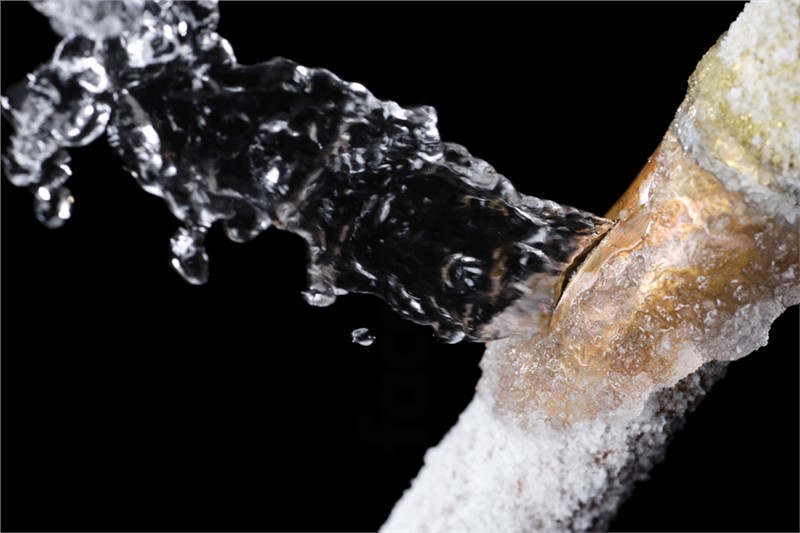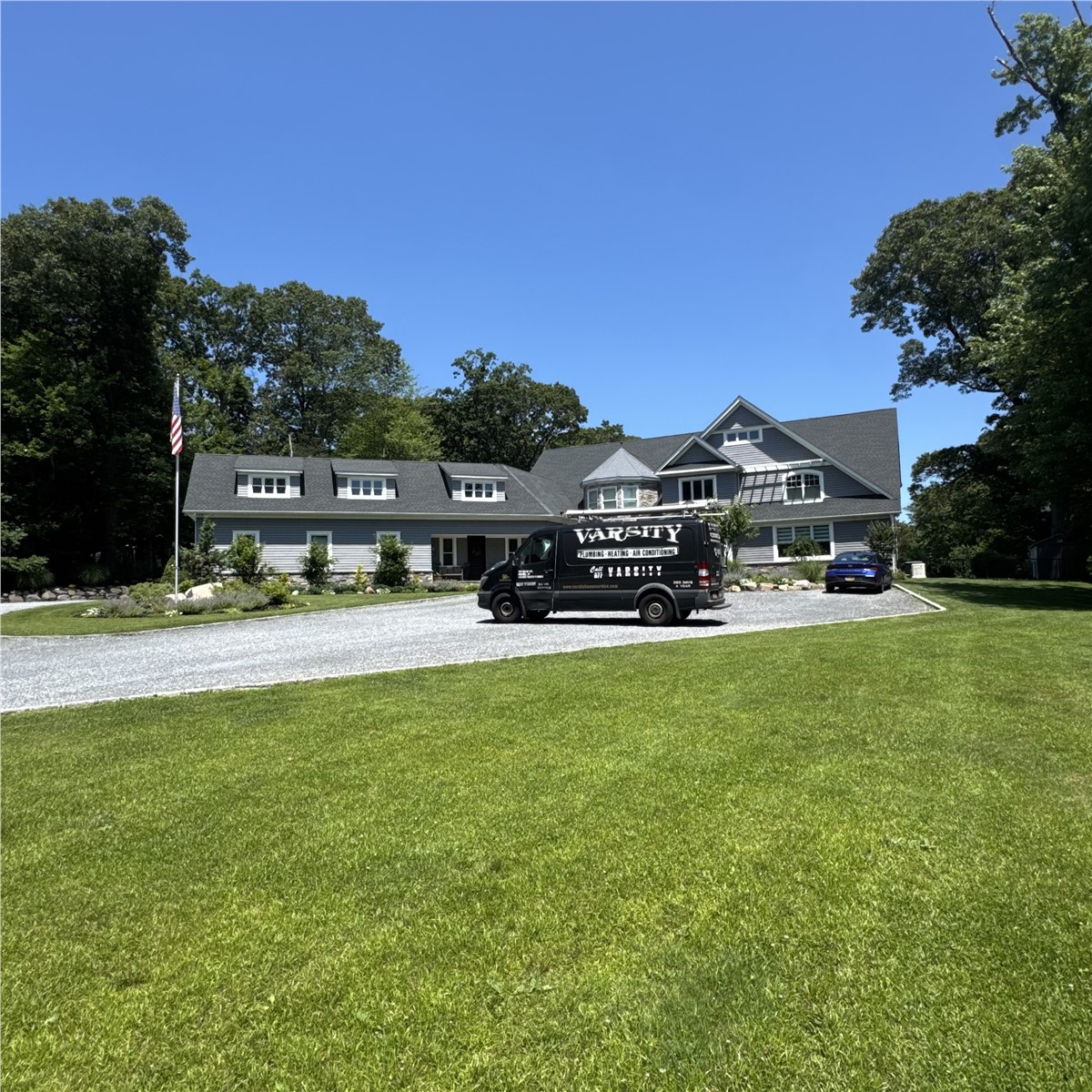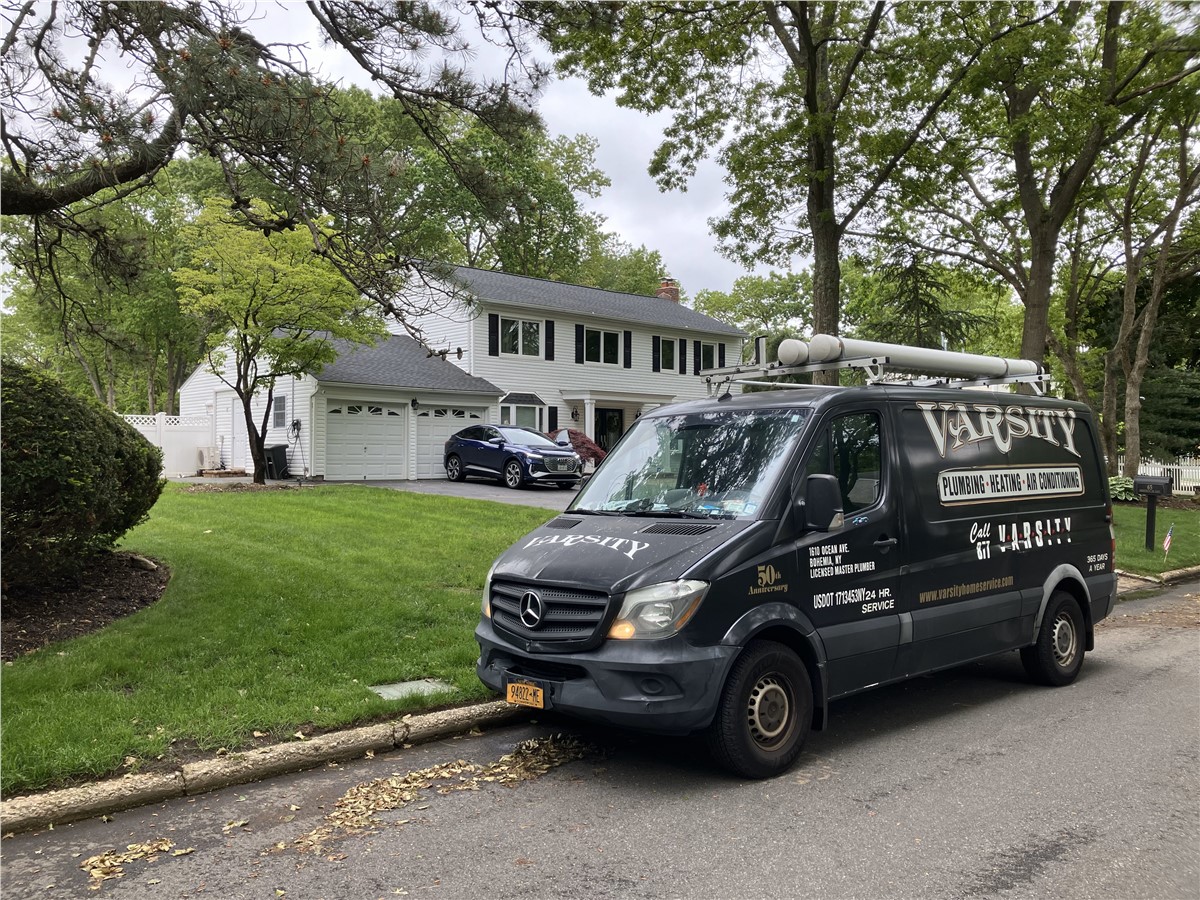
When experiencing the most frigid temperatures during the winter season, homeowners should be watchful for freezing pipes. Not only is it a major inconvenience to not have running water, but also it poses a risk of the pipe bursting due to pressure build-up. It is important to act quickly to avoid potential damage to your home. Read on to learn how to identify a frozen pipe, what actions to take, and tips for preventing the situation altogether.
How can I tell if I have a frozen pipe?
- Lack of Water Flow: One of the earliest signs of a frozen pipe is reduced or no flow from plumbing fixtures, including your faucets, showers or toilets.
- Frost on the Pipe: If in a place where it is visible, such as under the sink, you may be able to see the exterior of the pipe coated with frost.
- Bulging Pipe: Water expands when it freezes, so a pipe that appears to be bulging serves as a warning sign of a potential burst.
- Foul Smells: An odor coming back up through the faucet or drain could signify a partially or fully blocked pipe.
Which pipes are most vulnerable to freezing?
- Unheated Interior Spaces: Pipes located in areas of the home that do not receive the same amount of heat such as attics, basements or garages have a greater tendency to freeze.
- Exterior Walls: Pipes running through exterior walls that may lack sufficient insulation are at the highest risk for freezing.
What should I do if I have a frozen pipe?
If you discover a frozen pipe, it must be thawed as soon as possible. This may sound like something to try to do yourself, but it’s not as easy as it sounds! It can be tricky to locate the frozen area or it may not be accessible. Many people don’t know how to carefully thaw pipes in a safe and effective manner as some methods found on the internet can be hazardous. Additionally, most homeowners aren’t prepared for the aftermath of a frozen pipe. Any cracks or bursts that may have already occurred will allow water to come in full force once thawed. It’s best to call a licensed plumber because a professional will have the expertise to locate and thaw frozen pipes in a manner that minimizes the damage to your home.
Help! What do I do if my pipe bursts?
If a pipe bursts and you are experiencing flooding, the first critical step to take is to turn off the water at the main shut-off valve. Next, call an expert plumber to make the necessary repairs. Once the immediate problem is solved, depending on the severity of the damage you may need to get in contact with a water damage restoration company and your insurance agent. Don’t worry – water damage as a result of burst pipes is covered by most homeowners insurance policies.
Tips for Preventing Frozen Pipes
- Insulation: The pipes located within exterior walls or in the unheated spaces of your home such as attics, basements, or garages should be insulated to maintain higher temperatures. Ensure all doors and windows are properly sealed.
- Winterize Your Plumbing: Drain water from vulnerable pipes, including swimming pool and sprinkler water supply lines. Disconnect, drain and store any exterior hoses. Close the indoor valves that supply these outdoor access points. Call a professional plumber before the temperatures drop to freezing to ensure this is done properly.
- Temperature: Keep your thermostat set to the same temperature day and night. When away from your home, make sure it does not fall below 55° F.
- Air Flow: Keep garage doors closed to protect water lines. Inside the home, open kitchen and bathroom cabinet doors to allow warm air to circulate around the pipes.
- Water Flow: Turn your faucets on to a cold-water drip on very frigid days. The movement of running water helps to prevent the pipe from freezing.
While we cannot control the weather, we can take these steps toward protecting our home from freezing or burst pipes. If you find yourself in an emergency situation, please do not hesitate to call Varsity Home Service for immediate response.
Tags
Subscribe to Varsity Home Service's Blog







